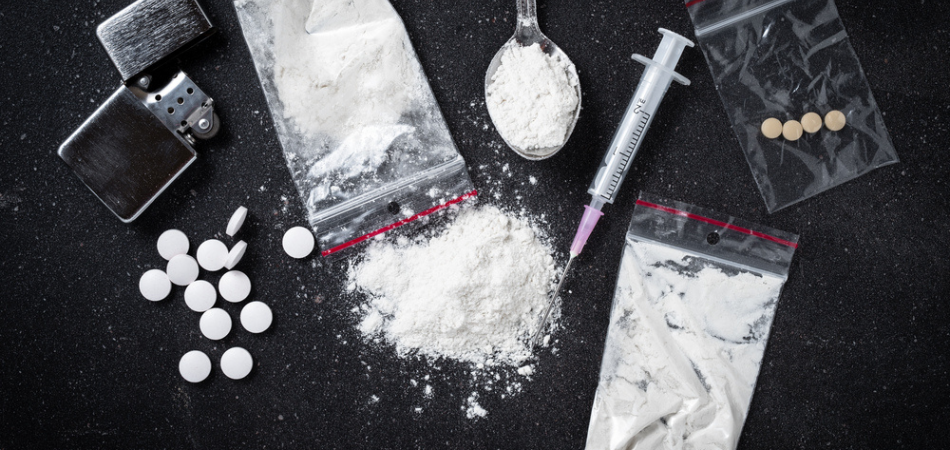Last Updated:
December 4th, 2023
Drugs are prevalent in social, political, legal, and medical discussions. We hear about them a lot – the danger of overdose, their legality, and their relation to social trends. At the same time, many people are unaware of the science of drugs and how they affect our bodies.
How many of the following facts about how psychoactive substances interact with our brain chemistry and affect different parts of the body, did you know?
Marijuana, movement, and dangerous diving
Many regular users of marijuana are under the false impression that they can drive safely after they’ve consumed the drug. However, scientific tests show a different story. Clinical studies show that marijuana significantly affects linear movement times and error rates for two types of arm motor movement. It may also slow your reaction times and decrease your divided attention capacities, cognitive performance, risk awareness, and your decision-making abilities.
Consequently, marijuana use makes driving dangerous, even for regular smokers. Driving after you’ve smoked puts you at risk of harm and endangers others around you.
Stimulants, the heart and the brain
Stimulants are a type of drug that speed up activity in your brain and central nervous system. This category includes many well-known illicit substances, such as cocaine, methamphetamine, and amphetamine (speed). Several legal substances, including nicotine and caffeine, are also stimulants.
Stimulants increase communication between different areas of cells in your brain and other body parts. This causes several psychological and physical effects, including:
- Increased heart rate
- Increased blood pressure
- Increased risk of coma, heart attack, and brain haemorrhage
In addition, stimulants affect how your body reacts to and tolerates other substances. For example, mixing cocaine with alcohol can create a new, highly toxic molecule called cocaethylene. Cocaethylene intensifies the attack of cocaine on your central nervous system, increasing the risk of heart attack or stroke, particularly in frequent users.
Opioids and the risk of overdose
When you take an opioid, be it on prescription or recreationally, it binds to endogenous opioid receptors in your brain, activating them. This has a calming effect throughout the whole body, relieving pain and producing feelings of euphoria in high enough doses.
This binding action also affects other systems in the body, including vital systems. It may make your skin flush and your mouth dry and cause nausea, vomiting, and itching. More seriously, it can slow your respiratory system, decreasing your heart rate and breathing.
An opioid overdose happens when you take a harmful dose of an opioid. Your breathing may slow to dangerous levels or even stop in these circumstances. This can lead to brain damage, coma and sometimes death.
If you think that someone may have experienced an opioid overdose, you must alert the emergency services immediately. While life-threatening if untreated, opioid overdoses can be reversed with urgent medical attention and the administration of the medication naloxone. Users of opioids, their family and close friends often carry this medication with them to be used in an emergency.
Ingestion and its impacts
As well as causing harm through their interactions with our brains, drugs can also damage other body parts when you ingest them. Different methods of ingestion cause specific types of harm. Nasal passages can become damaged when snorting drugs such as cocaine and lungs and airways can become weak through smoking drugs such as marijuana. Sharing needles when injecting, a common method for drug use to achieve a quick high, can lead to the spread of blood-transmitted diseases such as HIV and Hepatitis B.
The method of ingestion may also impact the time it takes for you to feel the effects of a drug and the intensity of the high. In general, smoking, snorting and injecting substances cause the active chemicals to reach your brain faster and more intensely than swallowing pills or tablets. This may increase the chance of an overdose.
Alcohol: more than simply hangovers
According to UK Government reports, Europe has the highest alcohol consumption of any region globally, and most people have had a drink at some point in their lives.
However, despite its prevalence, alcohol is a potent and potentially dangerous substance that affects all areas of your body. If you’ve consumed more than a couple of units of alcohol, you may experience:
- heat loss and a rapid decrease in body temperature
- a drop in blood pressure
- slurred words
- blurred vision
- loss of coordination
- increased urine production in the kidneys, resulting in thirst and dehydration
- irritation of the stomach lining, leading to an ulcer
- nausea and vomiting
- changes in senses and perception
- slowed respiratory functions
- loss of consciousness
Alcohol also lowers your inhibitions, meaning you’re more likely to put your body in hazardous situations or cause harm to others. Under the influence, you’re at an increased risk of dangerous driving, unprotected sex, and verbal and physical aggression. Alcohol also comes with long-term health consequences, making you more likely to develop serious conditions like liver disease and several types of cancer.
Prevention and recovery
While the effects of drug misuse on the body can be scary, they are both preventable and curable.
If you’ve developed an addiction to a substance, quitting drug use isn’t so simple. It can be dangerous to suddenly stop using a substance without medical support, and long-term recovery usually requires professional and sustained treatment.
The good news is there is help available. Addiction treatment programmes such as the ones at Recovery Lighthouse offer evidence-based methods proven to help anyone safely overcome drug addiction and let the healing begin. While making the call for help isn’t always easy, reclaiming a life of sobriety is worth it.
If you or a loved one is living with addiction, don’t hesitate to get in touch. The sooner we speak, the sooner you can be on the journey to life-long recovery.


